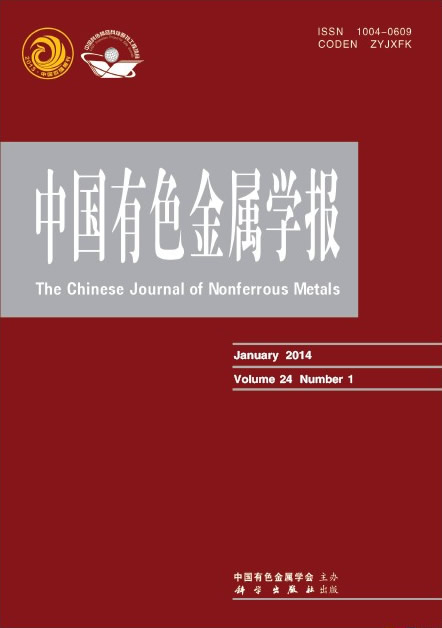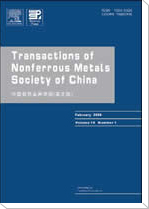中国有色金属学报(英文版)
Transactions of Nonferrous Metals Society of China
| Vol. 23 No. 12 December 2013 |
(1. National Engineering Research Center of Light Alloy Net Forming, School of Materials Science and Engineering, Shanghai Jiao Tong University, Shanghai 200240, China;
2. Key State Laboratory of Metal Matrix Composite, School of Materials Science and Engineering,
Shanghai Jiao Tong University, Shanghai 200240, China)
Abstract:The microstructures and mechanical properties of Mg-4.2Zn-1.5RE-0.7Zr alloy were investigated under different heat treatment conditions. The as-cast alloy consisted of α-Mg phase, T-phase and Mg51Zn20 phase. After aging treatment (single-step (325 °C, 10 h) and two-step (325 °C, 4 h)+(175 °C, 14 h)), neither T-phase nor Mg51Zn20 phase dissolved into the matrix and the coarsening of α-Mg phase was not significant. When peak-aged at 325 °C for 10 h, dense short rod-like β′1 phase precipitated in the matrix. Further ageing at 325 °C led to coarsening of β′1 phase and a decrease in number density. Alloy aged at 325 °C for 10 h achieved the highest yield strength (YS) and ultimate tensile strength (UTS) of 153.9 MPa and 247.0 MPa, which were increased by 48 MPa and 23 MPa from as-cast condition, respectively. While the elongation slightly decreased to 15.6%. Comparatively, the YS and UTS of alloy two-step aged by (325 °C, 4 h)+(175 °C, 14 h) showed little difference from those of single-step aged alloy, but with a lower elongation of 13.4%. In addition, the fracture surfaces of Mg-4.2Zn-1.5RE-0.7Zr alloy under different thermal conditions were mainly characterized by quasi-cleavage feature, but with differences in the details.
Key words: Mg-Zn-RE-Zr alloy; heat treatment; microstructure; mechanical properties


